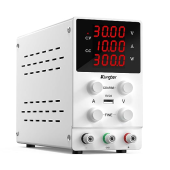Hello. I have this power supply 0-30v, 0-10A:

Say I wanna charge my 8 100Ah cells in parralel at 3.65V. I put 3.65v on PSU, crank amperage to max and start charging.
1. Voltage on PSU display stays the same, as configured 3.65V. PSU remains in a CV mode.
2. The actual voltage output from PSU is lower, say approx. 3.45V. (measured with multimeter at PSU output connectors)
3. The voltage at cell pins is 3.3V.
4. The charging current is about 3A.
How do I charge at 3.65v max but 10A current? Should I increase the voltage on PSU while keeping the actual voltage output under loads under 3.65v?
Thank you

Say I wanna charge my 8 100Ah cells in parralel at 3.65V. I put 3.65v on PSU, crank amperage to max and start charging.
1. Voltage on PSU display stays the same, as configured 3.65V. PSU remains in a CV mode.
2. The actual voltage output from PSU is lower, say approx. 3.45V. (measured with multimeter at PSU output connectors)
3. The voltage at cell pins is 3.3V.
4. The charging current is about 3A.
How do I charge at 3.65v max but 10A current? Should I increase the voltage on PSU while keeping the actual voltage output under loads under 3.65v?
Thank you


